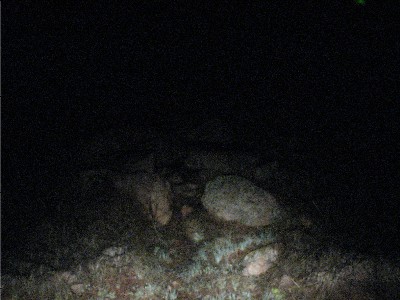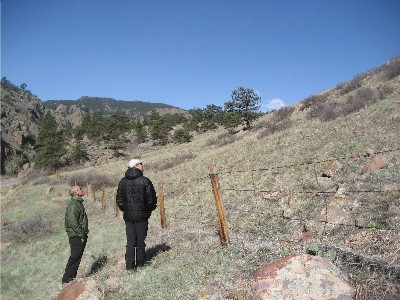“…the supreme and magnificent Mont Blanc, raised itself from the surrounding aiguilles, and its tremendous dome overlooked the valley.” –from Mary Shelley’s Frankenstein
 I’m excitedly preparing for a return to the French Alps, and in the process, I’m reading and rereading some of the literature that pertains to this area. Mary Shelley’s Frankenstein is one story that I reread last week. Frankenstein seems to be one of those stories that we learn as children. Its characters show up in Saturday morning cartoons, and references to Frankenstein surface in our adult conversations about science and politics. But as I reread the book, I was struck by its intellectual and spiritual depth…depth that is astounding when one considers that Mary Shelley was only nineteen when she wrote it. Sadness pervades the book, a sentiment that Shelley knew all too well in her own life. The story of ambitious Victor Frankenstein and his creation—the “monster” or “demon” as he is called—seems particularly relevant to today’s discussions of genetic engineering and stem cell research, to larger questions about science and ambition and the quality of life. In the process of exploring these larger issues, Shelley turns a keen eye towards natural landscapes. Frankenstein’s monster retreats high into the mountains above Chamonix, France and Frankenstein pursues him to the icy ends of the earth. The plot unfolds in places of singular beauty, contrasting with the story’s themes of spiritual and physical ugliness. I thought I knew Frankenstein until I reread it…and found it to be an old story that contains timeless truths about moral responsibility and the value of life.
I’m excitedly preparing for a return to the French Alps, and in the process, I’m reading and rereading some of the literature that pertains to this area. Mary Shelley’s Frankenstein is one story that I reread last week. Frankenstein seems to be one of those stories that we learn as children. Its characters show up in Saturday morning cartoons, and references to Frankenstein surface in our adult conversations about science and politics. But as I reread the book, I was struck by its intellectual and spiritual depth…depth that is astounding when one considers that Mary Shelley was only nineteen when she wrote it. Sadness pervades the book, a sentiment that Shelley knew all too well in her own life. The story of ambitious Victor Frankenstein and his creation—the “monster” or “demon” as he is called—seems particularly relevant to today’s discussions of genetic engineering and stem cell research, to larger questions about science and ambition and the quality of life. In the process of exploring these larger issues, Shelley turns a keen eye towards natural landscapes. Frankenstein’s monster retreats high into the mountains above Chamonix, France and Frankenstein pursues him to the icy ends of the earth. The plot unfolds in places of singular beauty, contrasting with the story’s themes of spiritual and physical ugliness. I thought I knew Frankenstein until I reread it…and found it to be an old story that contains timeless truths about moral responsibility and the value of life.

 We call this time of the year “mud season” in the mountains. The snow is melting off the slopes, but the trails generally aren’t solid enough to hike on without slipping around in the boggy sections. A lot of people go on vacations to get away from it all, and I’ve just been taking weekend climbing trips to Boulder…transitioning, I suppose, from winter to summer activities. I’ve been having so much fun climbing that I haven’t missed the skiing a bit, and hanging out in Boulder Canyon is in many ways as beautiful as hanging out on top of a snowy peak. Boulder Creek thunders below the crags…swollen from the snowmelt.
We call this time of the year “mud season” in the mountains. The snow is melting off the slopes, but the trails generally aren’t solid enough to hike on without slipping around in the boggy sections. A lot of people go on vacations to get away from it all, and I’ve just been taking weekend climbing trips to Boulder…transitioning, I suppose, from winter to summer activities. I’ve been having so much fun climbing that I haven’t missed the skiing a bit, and hanging out in Boulder Canyon is in many ways as beautiful as hanging out on top of a snowy peak. Boulder Creek thunders below the crags…swollen from the snowmelt. 


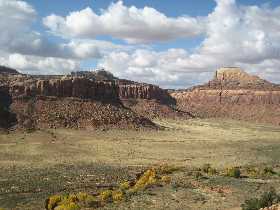
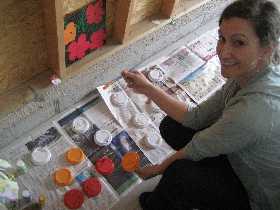 I was recently told that I am “obsessive about plastic.” It’s true, and here’s why: there’s this thing called the Great Pacific Garbage Patch, a.k.a. the Eastern Garbage Patch, a.k.a. the Pacific Trash Vortex. Google any of those terms, and you will be more disgusted than you’d imagine. The gist is this: basically, there’s a bunch of plastic trash floating in the ocean. Now it’s estimated to be two times the size of Texas, and it’s threatening wildlife. It’s toxic to the environment. It’s way lame. So, what to do? Well, first of all, don’t buy plastic. Next, don’t use plastic if you don’t need it, and recycle as much of whatever plastic you have as you can. Sometimes you’ll just end up with it anyway.
I was recently told that I am “obsessive about plastic.” It’s true, and here’s why: there’s this thing called the Great Pacific Garbage Patch, a.k.a. the Eastern Garbage Patch, a.k.a. the Pacific Trash Vortex. Google any of those terms, and you will be more disgusted than you’d imagine. The gist is this: basically, there’s a bunch of plastic trash floating in the ocean. Now it’s estimated to be two times the size of Texas, and it’s threatening wildlife. It’s toxic to the environment. It’s way lame. So, what to do? Well, first of all, don’t buy plastic. Next, don’t use plastic if you don’t need it, and recycle as much of whatever plastic you have as you can. Sometimes you’ll just end up with it anyway. 

 I went to Holland last week—Holland, Michigan, that is. The annual Tulip Time festival was on, with traditional dancers clogging in streets, carnival food, arts & crafts, and—as one might expect—lots of tulips. I had been wanting to go to Tulip Time since I first heard of it from my local pal Arika Theule-Van Dam, who taught me that “if you ain’t Dutch, you ain’t much” in these parts. The festival was exciting, but not the kind of thing I’ll be raving about for decades. Maybe I should have eaten an elephant ear. Or maybe I should have insisted we go visit the tulip farms nearby. Instead, we took in some of these beauties from the sidewalk:
I went to Holland last week—Holland, Michigan, that is. The annual Tulip Time festival was on, with traditional dancers clogging in streets, carnival food, arts & crafts, and—as one might expect—lots of tulips. I had been wanting to go to Tulip Time since I first heard of it from my local pal Arika Theule-Van Dam, who taught me that “if you ain’t Dutch, you ain’t much” in these parts. The festival was exciting, but not the kind of thing I’ll be raving about for decades. Maybe I should have eaten an elephant ear. Or maybe I should have insisted we go visit the tulip farms nearby. Instead, we took in some of these beauties from the sidewalk: 


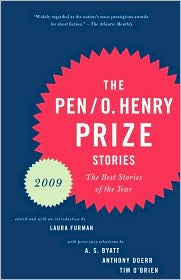 Hot off the press: The PEN/ O. Henry Prize Stories 2009. This superfab story collection was just released yesterday, but I carried a pre-pub copy with me to read on a weekend jaunt to Michigan. I’ll enthusiastically report that none of these twenty stories had me dozing on the plane. Each of them is beautifully crafted, and however intricate some may become, the best follow a simple trajectory: a young man falls in love with a prostitute; an uncle takes on a mistress; a daughter fights to free herself from her mother. In a single collection, readers will feel as though they’ve traveled the world—settings circle the globe from South Africa to Scotland to Egypt to India to—of course—the Good Old U.S. of A. No matter where these stories are set, they have one thing in common. They bridge the gap between the individual and the community, as juror Anthony Doerr explains. “Writing stories,” says Doerr, “is not…about spending lots of time with oneself. It’s about learning to be able to look beyond the self, beyond the ego, to enter other lives and other worlds. It’s about honing one’s sense of empathy so that a story might bridge the gap between the personal and the communal.” Each of these stories has its own way of showing us what it means to belong to the whole.
Hot off the press: The PEN/ O. Henry Prize Stories 2009. This superfab story collection was just released yesterday, but I carried a pre-pub copy with me to read on a weekend jaunt to Michigan. I’ll enthusiastically report that none of these twenty stories had me dozing on the plane. Each of them is beautifully crafted, and however intricate some may become, the best follow a simple trajectory: a young man falls in love with a prostitute; an uncle takes on a mistress; a daughter fights to free herself from her mother. In a single collection, readers will feel as though they’ve traveled the world—settings circle the globe from South Africa to Scotland to Egypt to India to—of course—the Good Old U.S. of A. No matter where these stories are set, they have one thing in common. They bridge the gap between the individual and the community, as juror Anthony Doerr explains. “Writing stories,” says Doerr, “is not…about spending lots of time with oneself. It’s about learning to be able to look beyond the self, beyond the ego, to enter other lives and other worlds. It’s about honing one’s sense of empathy so that a story might bridge the gap between the personal and the communal.” Each of these stories has its own way of showing us what it means to belong to the whole. 